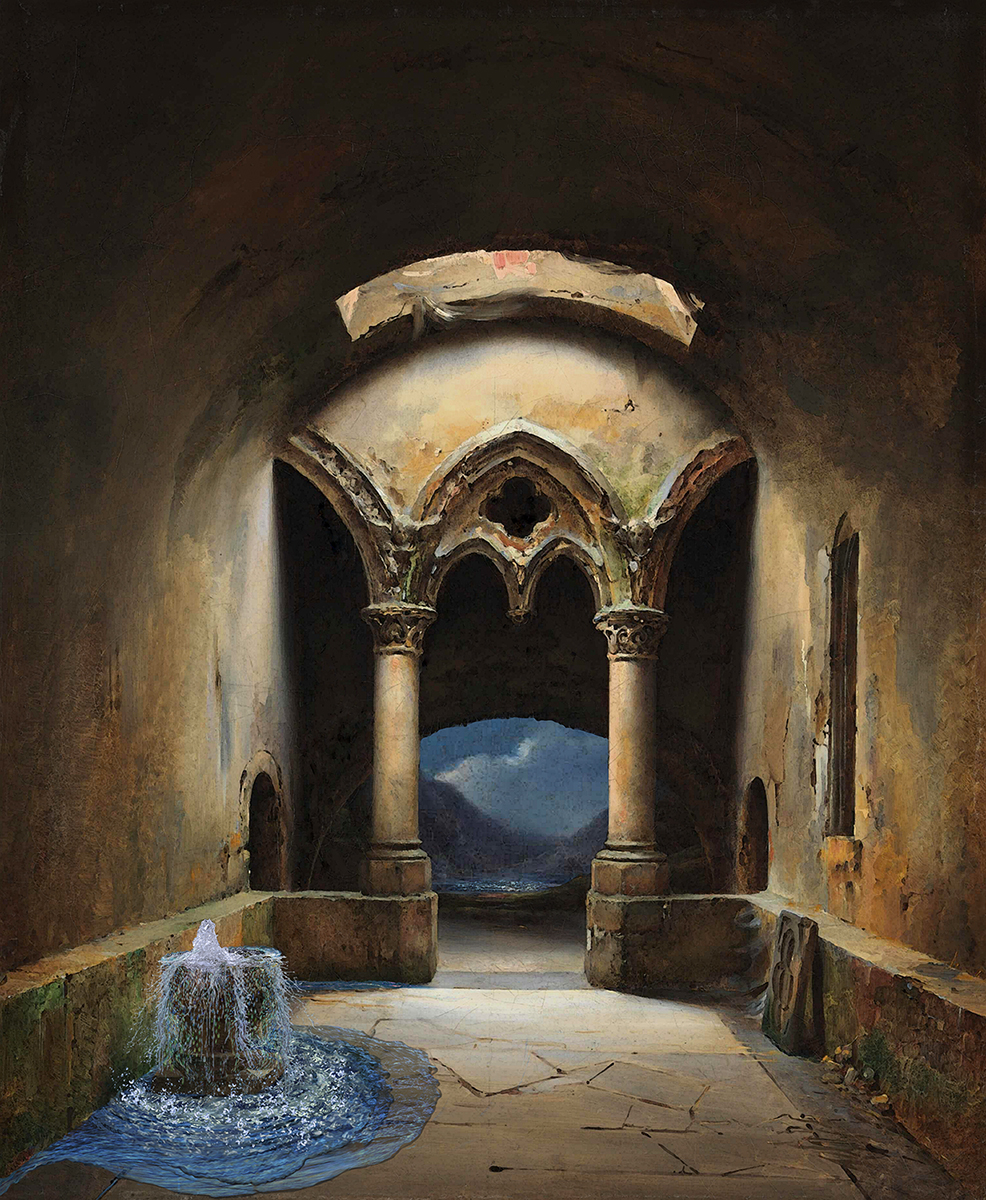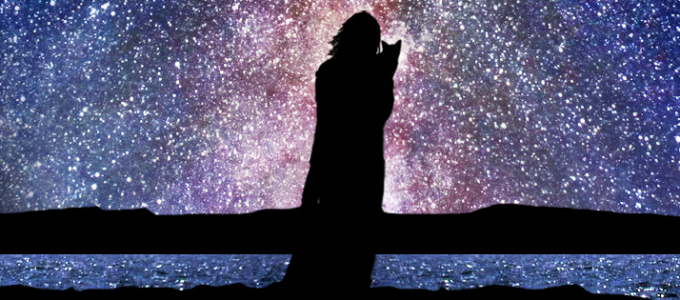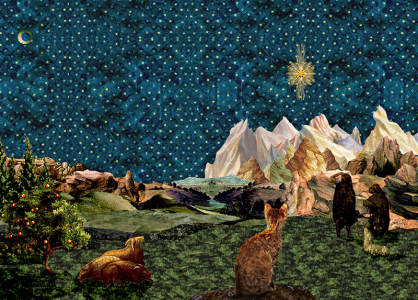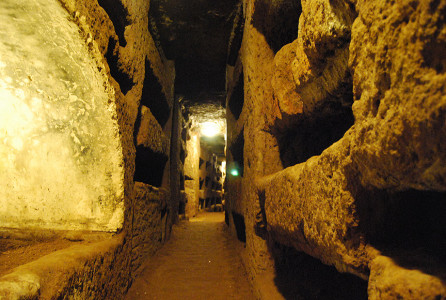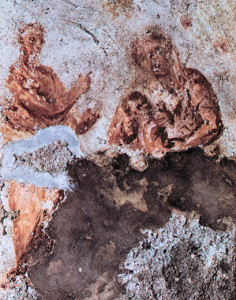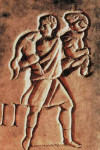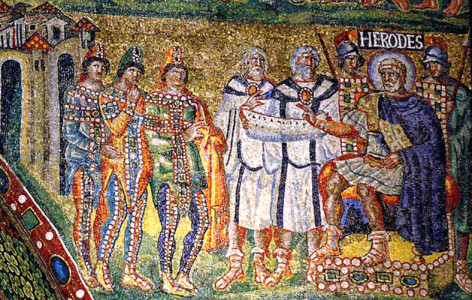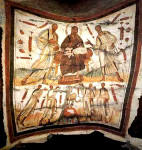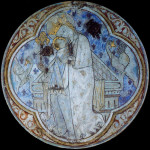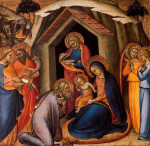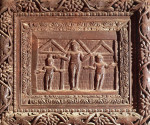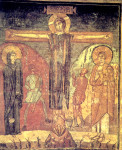My apologies to you all for disappearing for so long! I’ve been battling a bizarre antibiotic-resistant infection picked up at a hospital last year, and have been unable to work for many months, but I’m slowly improving.
I’ve spend untold hours working on digital mosaics and computer busywork (since I haven’t had the wit to write), but at least I’ve accomplished one thing: I’ve finished transcribing my 1993 PhD dissertation and uploaded it to academia.edu. The title is:
Native American Shields, Old Symbols for a New Spiritual Quest in the Contemporary Women’s Movement
and if you’re interested, you can find it at:
https://www.academia.edu/37357137/
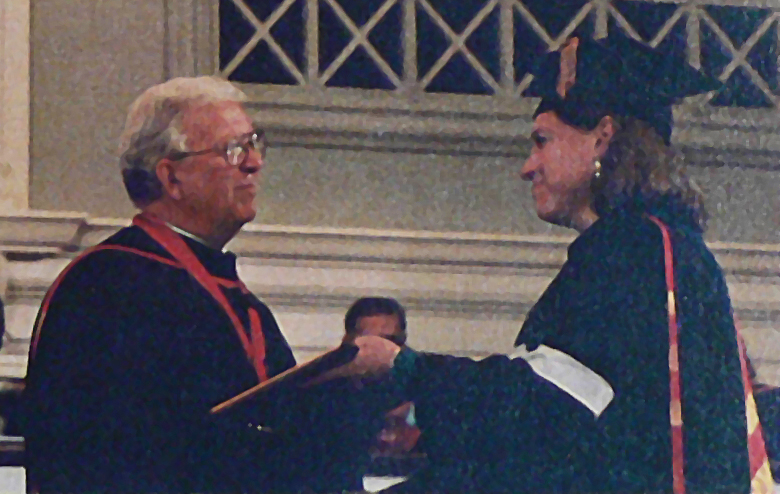
The dissertation was based on a summer’s on-site research with Euro-American women raised in the Church who were attending workshops on Native American spirituality–specifically to build shields. I interviewed 40 women about their reasons for leaving the Church and choosing a Native American spiritual path, using Marion Woodman’s revisions of Jungian psychology to analyze the interviews and shield images. Rosemary Radford Ruether and Meinrad Craighead provided critiques of the Church from within. I concluded with a my own Jungian critique of the Church–and suggestions for constructive change.
Although 25 years have passed, the issues are still current, as are the women’s responses to the pain they experienced in the Church. My own thoughts have grown and changed in the passing years, but I still find myself content to stand by what I wrote then. Below is an edited version of the dissertation’s final chapter. You can also find it here, where I’ve uploaded a number of the photos I took of the shield workshops (see drop-down menu under Native American Shields, above). Descriptions of the workshops are in the dissertation.
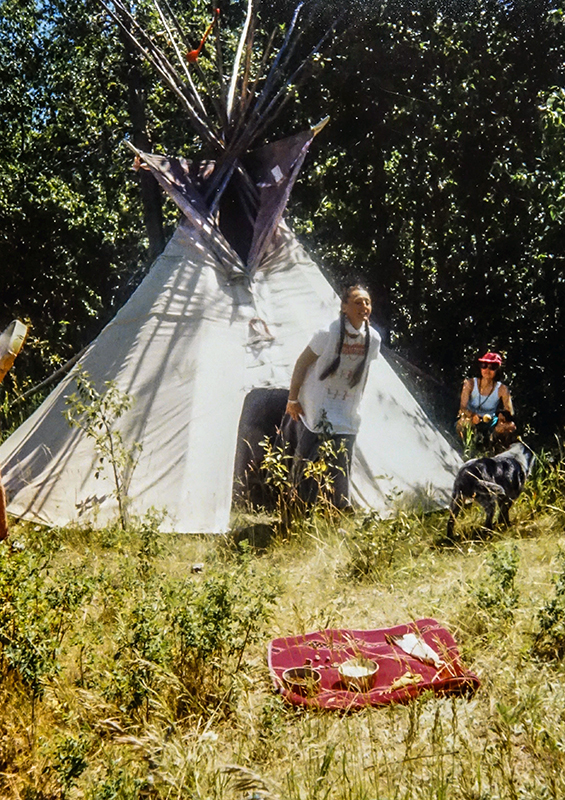
![]()
I dreamed I saw a giant tree, branches bare and cold, blown by the winds from place to place, rootless, tumbling across the plains. It stood precariously for a moment, and then fell with almost deliberate slowness, and in its fall it crushed beneath its branches the vast and delicate wings of a golden butterfly. As the butterfly died, its wings broke into brittle fragments and blew away like leaves in a winter wind. The great barren tree tumbled on, coming to rest at last, upright, supported by the strength of a living tree, caught and held by their intertwined branches.
Individuals are sometimes blessed with dreams that reach beyond the limits of their own lives into the heart of the reality that surrounds them. I believe the dream above to be such a gift. In it I felt as if I were seeing with the eyes of a woman like the one from my research, below, who experienced violence at the hands of the Church:
The Church kills dreams in women. It does it ruthlessly, without concern or love . . . Any woman who says she does not feel massive pain in this society and in the Church is living a lie, or she’s just burying it. It will surface, or it will kill her (“Leslie”).
The tree of my dream is a broken remnant of Meinrad Craighead’s “tree which lives at both ends.” The divine energy of the mind has been disconnected from the energy of the body, and the restless movement of masculine aggression has abandoned its roots in “God as mother of the entire fabric of creation.” The great barren institution of the Church rolls across the Earth, rootless, a truncated cross rather than a living tree, impersonal and uncaring in its destruction. Driven by the winds of arid masculinity, it crushes the fragile and beautiful butterfly of women’s hopes for transformation, scattering those hopes and women’s shattered lives to the winds, leaving women to search alone in the wilderness, without any visible paths, for the presence of the One in their lives.
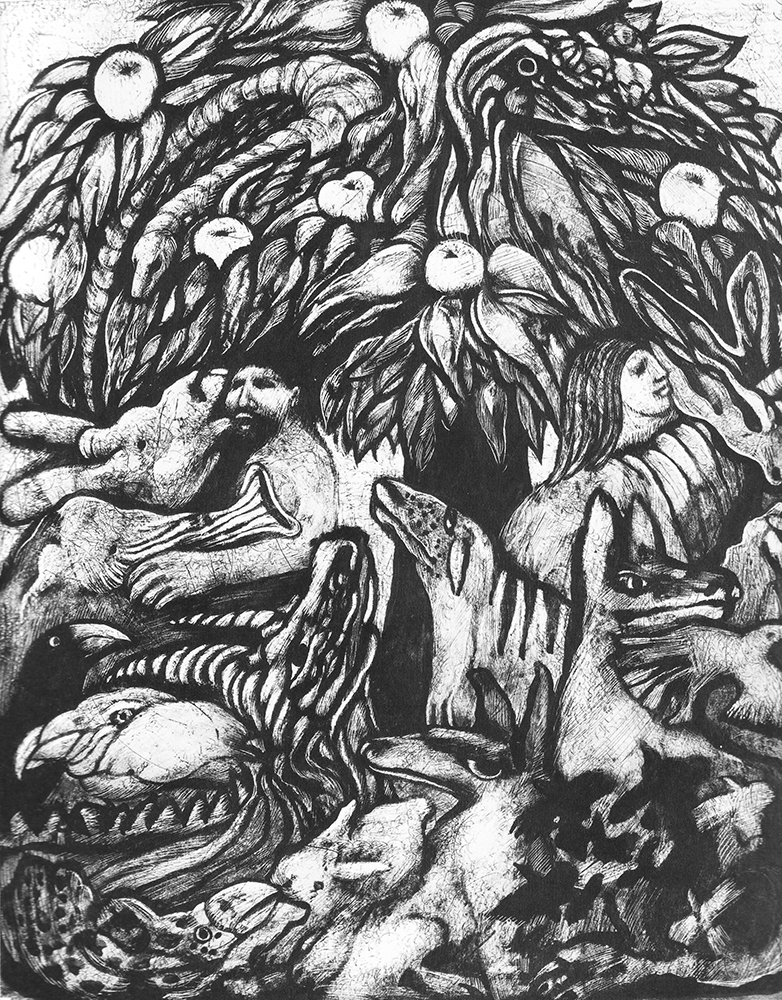
Although the dream scene is a wintry one, still it holds out hope for the spring. The rootless tree is caught and held upright by the strength of a second tree firmly rooted in the Earth, its branches locking the barren tree in a complex embrace, pressing the barren trunk into its own contact with the Earth. In the terms of the previous chapter’s discussion, the living tree could symbolize the living Church—the flowering Church—wherever it is found, as well as other living traditions, such as the Native American, which draw deep sustenance from the fertile, feminine Earth. The grafting of such Earth-affirming energies into its life embodies the strongest hope for the reflowering of the Church.
The two questions asked at the beginning of the previous chapter hang heavy in the silence of the dream. Can the Church affirm the balanced symbolization of the Holy in images and rituals that do reverence to both the feminine and the masculine? Can the Church affirm women’s unique insights into the central mystery of the Christ? The answers are not yet clear. As the women interviewed emphasized in their responses, the first necessary step is the recognition of fully realized feminine wholeness in the Church and in the nature of the One. Without the presence of this feminine wholeness—not the depotentiated feminine of Christian tradition—neither reconciliation with the Church’s lost women nor the healing of its own wounds can be found.
Women seeking religious meaning through Native American spirituality seek the same essential treasure: their feminine Beingness, the feminine God-image in their hearts. At this time the Church does not offer its women any reliable access to the specifically feminine matrix of life. Without a structured means of access to the feminine within the Church, most women who are able to articulate their need will simply drift away, as those interviewed for this research have done—embittered, shattered, grieving, relieved, or simply abandoning an irrelevant piece of history, as each woman’s experience may be. In many cases they will take Jesus with them, alive in their hearts, but no longer related to the structures of the Church. But until they are able to affirm their essential femininity, they cannot encounter him as the bridegroom, the creative masculine within, the self-sacrificing guide to the feminine face of the One. And unless the Church offers pathways to the feminine within its own doctrines, few of these women will seek the bridegroom there.
Although the Church has treasured up the most significant life-preserving mystery of the Western world, it faces the catastrophic possibility that the life may be draining away from its symbols more rapidly than the Church can apply remedies. Dissatisfied women represent a movement away from the Church that has its echoes in rapidly diversifying New Age phenomena, the emerging men’s movement, and deep ecology. People speak glibly of a contemporary paradigm shift, not realizing what such a shift might mean. If a paradigm shift is primarily away from old patterns of reality, without containing within itself the balanced fullness of a new paradigm, disaster could result. The abandonment of traditional religious structures without firm alternatives to replace them would, as Jung saw clearly, bring catastrophic chaos to society.
Unless the Church can open itself to re-experience the numinous heart of its message in symbols that speak to the needs of the contemporary age, then it cannot offer itself to the world as the living body of Christ. The urgent need of the industrialized West is for wholeness within and without: the balancing of masculine and feminine and the sacred marriage that leads to authentic encounter with the face of the One manifested within each human being and in the whole of embodied reality. In the death, burial, and resurrection of Jesus Christ, the Church has preserved this life-engendering mystery, but it has severed it from the Earth, and from the balanced wholeness of humanity’s most authentic experience of the Holy.
It is futile for the Church to try to respond constructively to critiques of its institutional structures without seeking to change the spiritual and psychological bases of those structural problems. Most of the respondents in my research could not conceive of a Church free of the destructiveness they had experienced within its walls. I believe this inability to imagine ecclesiastical change is rooted primarily in despair over the Church’s doctrinal bases, and only secondarily in pain resulting from its institutional abuses. If the Church were to address Christian women’s despair at its ultimate source—in patriarchal formulations of the nature of deity and women’s insignificance in that masculine equation—the abuses could be transformed through a natural process of growth. Embrace of the feminine matrix of life could move in organic procession toward reverence for the embodied cosmos and awareness of its participation in the Holy.

Like Meinrad Craighead, each Christian woman who confronts her pain and chooses to remain in the Church faces a long and lonely struggle for possession of her soul. In a recent letter, one respondent still struggling to stay in the Church wrote the following:
I still believe in the Church, but I see my sister clergywomen worn down by carrying the pain of the churches and their own pain, and that of their sisters in the pews. I watch knowing that I will not go back until I can see a way to work in the middle of that pain . . . . I feel like the support and teachers I need are out there (based in other traditions], and that eventually I will find enough of a vision to reenter parish ministry (“Elizabeth”).
Singly, in small groups, and sometimes in community, such women are spinning strong and supple anchors for a new web of wholeness. Each weaves her own experiences into those of her sisters, connecting hopes and personal symbols into the outer ring of a spreading web, working steadily inward toward the center, in spite of personal storms and human destructiveness.
For a woman who has birthed a shield, that center may be held by the power of her shield’s vision, a reminder of a beckoning presence encountered in the wilderness or within her own soul. A shield captures a vision of wholeness, sometimes with the fullness of the masculine complementarity, sometimes emphasizing the feminine alone. Like any true symbol, a shield that touches a woman’s depths will continue to draw her in, pulling her forward toward the Self as long as she remains creatively engaged with her journey to the center it symbolizes.
Jungian psychology bids a woman turn inward to listen to the voice of her deepest Self, and, having heard, to manifest her experience in the physical world, through writing, artistic production, or dance. Native American wisdom pushes a woman out into the created world to experience the call of the One and to bring that encounter to physical expression through song, dance, ritual movement, and the creation of spiritually significant ritual objects. Native America meets Jungian psychology at the center of the mandala, at the midpoint of the flowering cross of Christ, where spirit incarnates in flesh, and flesh embodies spirit.

http://www.meinradcraighead.com/
The Church must rediscover its true center in the ecstasy of immanence as well as transcendence if it is to embody the mystery of incarnation for the world. Women seeking participatory ritual in worship are reaching out with a true human instinct for experience of the wholeness of the One. The danger confronting them is that without the structured guidelines of proven traditional paths, they may fall into fascination with the psychic numinosity of destructive complexes—rather than with the creative pull of the Self.
Traditionally, the mysteries of the Church have facilitated experience of the One through such proven paths; however, the patriarchal bias of those mysteries has distorted human reality to such an extent that a critical mass of spiritual anguish has been achieved in the contemporary Western world. The paradigm is shifting, whether we will it or not. As the old consensus dissolves and social fabric unravels, American society is being split by those straining to cover themselves with the tatters of receding traditions and by those eager to push ahead into new revelation.
This split characterizes the contemporary American Church just as it characterized Mediterranean religious expression in the New Testament period. The cross of Christ, however, in its paradoxical fullness, fully supports neither of these opposing energies: it offers a point of reconciliation at its heart. It preserves the Law down to the last jot and tittle, while demanding new wineskins for the new wine of the Creative Spirit. It introduces a sword of separation into the most intimate fellowship, but draws all humanity to itself in love. It marks the intersection of proven and reliable old roads of tradition with the ongoing creative paths of the One, who is eternally making all things new. The essence of Christ’s message for the world is found in the paradoxical presence of both ancient wisdom and newness of life born from his passion and resurrection. The yoke of Christ to which the Church is called is a double one, harnessing polar opposites in creative tension: immanence with transcendence, masculine with feminine, flesh with spirit, light with dark, death with life.
As I opened my sacred circle to the surrounding forest at the completion of the vision quest that birthed the concluding chapters of this dissertation, the setting sun created a glowing shield from a previously unseen spider’s web. The hoop of the web was perfect in its roundness. The dying shaft of light that turned the web to flame illuminated only a few radiating strands, etching a golden cross against the shadowed trees, a cross that reached its arms out to touch the web’s circle at the four points of the medicine wheel. The web only glowed for a moment before the shaft of light was lost among the shadows, but it burned its image into my heart as a symbol of the longed-for wholeness of all visible and invisible being: the cross of Christ woven into the luminous heart of Creation.
